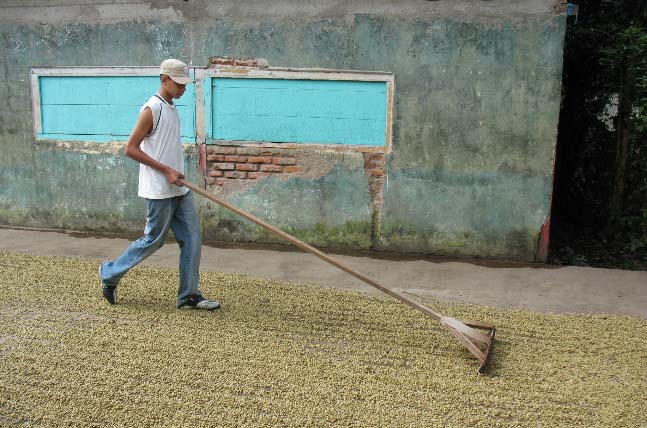 A Rough Guide to Coffee’s Epic-Journey
A Rough Guide to Coffee’s Epic-Journey
- Prior to 1000 AD. Galla tribe in Ethiopia realize that they get an energy high from eating ground up coffee cherry. This tasty snack was a far cry from your traditional modern brew: They would roll up cherry grinds with animal fat into little pasty energy balls, useful for a bit of buzz before a big battle or long march.
- 1000 A.D. Arab traders bring coffee to their homeland and begin cultivating it. They boil the beans to create a drink known as “qahwa” (that which prevents sleep).
- 1453. Ottoman Turks bring coffee to Constantinople, and history’s first coffee shop, named Kiva Han, is opened.
- Wherever Islam spread, coffee came along as well. However, the Arabians were clever in their exportation scheme: to prevent importers from growing the bean themselves, they made the beans infertile by parching or boiling them.
- 1600.Baba Budan, an Indian pilgrim-smuggler is said to be the first to bring fertile seeds outside of Arabia or Africa, by strapping them to his belly.
- 1615. Venetian trader brings coffee to the West. Pope Clement VIII, though initially lobbied to ban the infidels’ (the Ottoman Empire) favourite drink, chooses to baptize the beverage, making it acceptable for guilt-free Christian consumption.
- 1616. The Dutch are the first to smuggle an entire coffee plant into Europe.
- 1607. When founding the colony of Virginia, some believe that Captain John Smith brought coffee to North America for the first time.
- 1652. England opens its first coffee house. Many follow, and soon their popularity rises to the point they are dubbed “penny universities”–a penny being the price of a coffee, and the discussion among patrons rivalling those among enrolled university students.
- 1683. Turks fleeing Vienna after a battle leave behind bags of coffee, which are claimed as spoils by a Polish military officer, Franciszek Jerzy Kulczycki. With it, he open’s central Europe’s first coffee house, and begins the custom of filtering out grounds, adding a sprinkling of sugar and a dash of milk to the popular drink. This achievement has been recognized in many a modern Viennese coffeehouse by hanging a picture of Kulczycki in the window.
- 1690. The Dutch smuggle a coffee plant from the Arab port of Mocha. They become the first to cultivate it commercially, doing so both in Ceylon and their East Indian colony, Java. Think link provides the source of one of coffee’s popular nicknames: mocha java.
- 1717. The Dutch show off their coffee wealth, and give a plant to Louis XIV for Paris’s Royal Botanical Garden, the Jardin des Plantes. A little while later, a naval officer named Gabriel Mathieu de Clieu, was set to leave for Martinique. Thinking that he could turn Martinique into the next Java, he asked the king for a clipping of the coffee plant. Permission was promptly denied, so de Clieu stole into the Jardin des Plantes hothouse in the dead of night, and stole a sprig. A perilous, pirate-filled, water-rationing trip over the Atlantic later (during which time de Cleu shared his water ration with his beloved plant), De Cleu’s coffee seedling would be the starting gene for 18 million trees in around 50 years, enough to supplu all of Latin America.
- 1727: Taking note of this fertile market, Brazil wants a slice of the coffee pie. They send in Lt. Col. Francisco De Melo Palheta to French Guiana. Col. Palheta has his own personal strategy to get his hands on a priceless coffee seedling: the governor of French Guiana’s wife. He charms her into giving him a bouquet topped with a few fertile springs at a farewell dinner, and by the 1800s, Brazil virtually controls the coffee market, expanding supply to the point of turning this exclusive beverage into the common man’s drink.
- 1773. The Boston Tea Party makes drinking coffee a patriotic duty in America.
- 1907: Brazil accounts for 97% of the world’s harvest.
- 1946: In Italy, the espresso machine is perfected by Achilles Gaggia. The deep brown colour of the robes of Capuchin-order monks, give this refined version of the brew its name, cappuccino.
Reference: http://www.nationalgeographic.com/coffee/ax/frame.html































